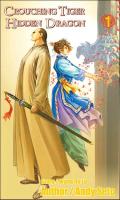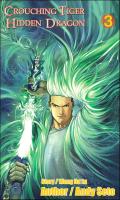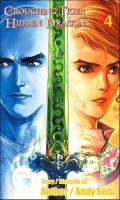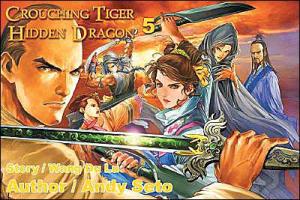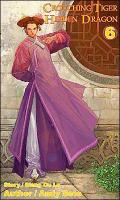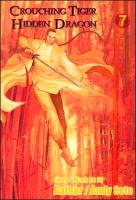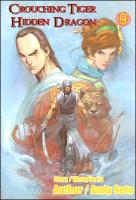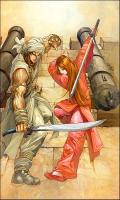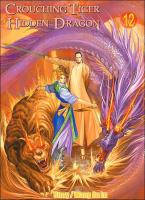Reading
Log For 2008
THE COMPLETE PERSEPOLIS
(2004)
Paperback
Pantheon, New York
read entirely on 2008-02-15
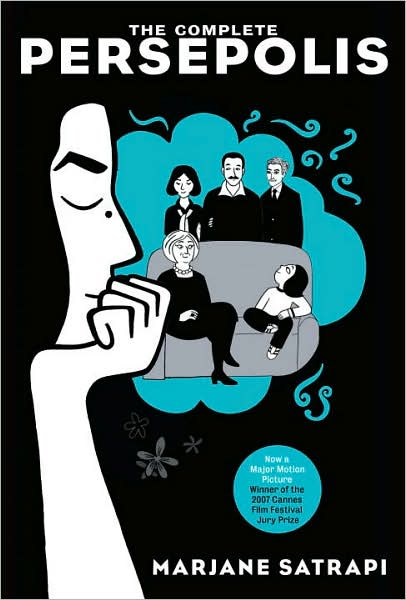
- Originally published in France as Persepolis
(2000) and Persepolis
2 (2001)
- 8: Wanted to be a prophet when she grew up.
- 47: She knew two of the 3000 political prisoners released
in March 1979: Siamak Jari and Mohsen Shakiba
- 83 - 84: Iranian pilots are released from prison to bomb
Iraq. They would only agree on the condition that the Iranian National
Anthem be broadcast.
- 99: Boys are given plastic keys which they are told will
unlock the gates of heaven if they are martyred.
- 131: She had Iron Maiden and Kim Wilde posters in her
bedroom.
- 133: Women chastise her for wearing a Michael Jackson
button. She claims it's Malcolm X.
- 137: Their neighbors, the Baba-Levys were among the few
Jewish families that stayed after the Revolution.
- 142: She notices a bracelet in the rubble...
- 153: She flies from Iran to Vienna.
- 241:
I had known a revolution that had made
me lose part of my family.
I had survived a war that had distanced
me from my country and my
parents. . .
. . . And it's a banal story of love
that almost carried me away.
THE MIND OF THE
MARKET
Compassionate Apes,
Competitive Humans, and Other Tales from Evolutionary Economics (2008)
Hardcover
Times Books, Henry Holt
and
Company, New York

2008-04-03 to 2008-04-07
- xix: Having written on controversial subjects for 30 years,
Shermer finds that nothing ruffles feathers as much as discussing
economics.
- xx: His introduction to economics came his senior year at
Pepperdine University where he was pressured to read ATLAS SHRUGGED.
It made a deep impression, though he now disagrees with Rand's ethics
of self interest:
(science shows
that in addition to being selfish, competitive, and greedy, we also
harbor a great capacity for altruism, cooperation, and charity),
reading Rand led me to the extensive body of literature on business,
markets, and economics.
I cannot say for certain whether it was the merits of free
market economics and fiscal conservatism (which are considerable) that
convinced me of its veracity, or if it was my disposition that
reverberated so well with its worldview. As it is for most belief
systems we hold, it was probably a combination of both. I was raised by
parents who could best be described as fiscally conservative and
socially liberal. Products of the Depression and motivated by the fear
of falling back into abject poverty, they skipped college and worked
full-time well into their later years. Throughout my childhood I was
inculcated with the fundamental principles of economic conservatism:
hard work, personal responsibility, self-determination, financial
autonomy, small government, and free markets. Even though they were not
in the least religious (as so many conservatives are today), my parents
were exceedingly generous to those who were less fortunate—greed is
good, but charity is better.
- xxiv: The motto of the Skeptics Society comes from
Tractatus
Politicus (1666) by Baruch Spinoza:
That I might investigate the subject matter of this science with the
same freedom of spirit as we generally use in mathematics, I have labored carefully not to
mock, lament, or denounce human actions, but to understand them;
and to this end I have looked upon passions, such as love, hatred,
anger, envy, ambition, pity, and the other perturbations of the mind,
not in the light of vices of human nature, but as properties just as
pertinent to it as are heat, cold, storm, thunder, and the like to the
nature of the atmosphere.
- 1: Begins with a comparison of the Yanomanö hunter-gatherers of
Venezuela to the consumer-traders
of New York and New Jersey. Their relative wealth can
be measured in Stock Keeping Units (SKUs).
- 16: The general distrust and resentment of those who have
benefited from the market comes from our Folk economics, based on
millennia of relatively equal distribution inside small bands.
- 18:
Because humans evolved in small groups of a few dozen to a
few
hundred individuals in hunter-gatherer communities, in which everyone
was either genetically related or knew one another intimately, most
resources were shared, wealth accumulation was almost unheard of, and
excessive greed and avarice were punished. Thus we naturally respond to
a free market system in which conspicuous wealth is paraded as a sign
of success with envy and anger, and the expectation is that someone or
something more powerful than those greedy individuals should implement
corrective action. All it evolutionary
egalitarianism. Further, throughout most of the history of
civilization, economic inequalities were not the result of natural
differences in drive and talent between members of a society equally
free to pursue their right to prosperity; instead, a handful of chiefs,
kings, nobles, and priests exploited an unfair and rigged social system
to their personal benefit and at the cost of impoverishing the masses.
Our natural response is to perceive such inequalities as ill-gotten
gains and to demand controls from the top down to limit the amount of
wealth accumulated by any one individual. Whenever anyone says “They
should do something about it,” the they
that is invoked is inevitably the social institution with the most
power—in
our case, the government.
- 21: The Russian anarchist and social commentator Pyotr
Kropotkin criticized Spencer and Huxley in his book Mutual
Aid (1902). He argues that nature shows some
species thrive because of social cooperation, rather than
greed.
- 25: Darwin must have considered William Paley, who invoked
Adam Smith's invisible hand, but inverted it from a bottom-up process
to a top-down divine force. Smith, in turn, was arguing against the
mercantilists, who believed economic transactions between nations were
zero-sum.
- 27: Smith's Wealth
of Nations was an argument against the mercantilist system
of protectionism and special privilege. Smith writes, “The wealth of a
country consists, not of its gold and silver only, but in its lands,
houses, and consumable goods of all different kinds.” Yet “in
the mercantile system, the interest of the consumer is almost always
constantly sacrificed to that of the producer.”
- 27 - 28: For example, Smith argues that growing grapes in
France is more efficient than in Scotland. Therefore, if one were truly
interested in the consumer, rather than protecting domestic producers,
it is better to import.
- 29: French economist Frédéric Bastiat satirized special
interest groups in The
Petition of the Candlemakers. The Candlemakers appeal to
the government to eliminate competition from the sun.
- 31: Four things made illegal by the Sherman Antitrust Act:
- price
gouging (charging more than the competition)
- cutthroat
competition (charging less than the competition)
- price
collusion (charging the same as the competition)
- monopoly
(having no competition)
- 31 - 32: The Aluminum Company of America (Alcoa), based on
the inexpensive process invented by Charles Martin Hall in 1886,
suffered more than any other company under Sherman. Of course, it was
the consumers who were denied cheap materials while other aluminum
producers didn't have to compete.
- 33 - 34: Microsoft monopoly trial regarding Netscape's
browser vs. Microsoft Internet Explorer.
According to the judge, “This
indicates that superior quality was not
responsible for the dramatic rise of Internet Explorer's usage share.”
In other words, even though Microsoft offered a higher quality product
at a lower price, that is not what led to its success over Netscape;
rather, Microsoft's exclusive deals and special offers to other
companies with whom it desired to do business is what led to its
success, and that is not fair. Not fair to whom?
Consumers? No—as Judge Jackson admitted, it was a boon to consumers. So
to whom was it not fair? The answer should be obvious by now: other
producers.
- 35: On April 1, 1983, Ronald Reagan increased the tariff on
foreign
motorcycle imports from 4.4% to 49.4% to protect Harley -Davidson.
- 36: By employing 1.3 million people, and keeping costs low,
Wal-Mart was responsible for 13% of U.S. productivity gains in the
second half of the 1990s. George Will notes that for every 50 jobs
Wal-Mart causes to be lost, it creates 100 new ones, making it about as
important as the Federal Reserve in holding down inflation. Further:
As Will notes, Wal-Mart prices
average 17 percent less than those of
other retail outlets, drawing 127 million customers per week, and in
2006 more than twnty-five thousand people applied for 325 jobs at a
Wal-Mart in Evergreen Park, Illinois. Calling Wal-Mart “the most
prodigious job-creator in the history of the private sector in this
galaxy,” Will estimates that “Wal-Mart and its effects save shoppers
more than $200 billion a year, dwarfing such government programs as
food stamps ($28.6 billion) and the earned-income tax credit ($34.6
billion).” To paraphrase Yogi Berra, if people won't work and shop at
other retail stores, there's no way you can stop them.
- 37: 2007 is the 50th anniversary of the Treaty of Rome.
Denmark, Ireland, and the UK were on economic par with the signatories
(France, Italy, Belgium, West Germany, Luxembourg, and the
Netherlands), but those three countries fell behind those that opened
economic borders. After Denmark, Ireland, and the UK opened their
economic borders to the six signatories, they eventually caught up.
- 44: The couldn't foresee how racing bicycles in the early
1980s could be improved—but they were.
- 47: Path
dependency or historical
lock-in, such as the QWERTY keyboard, leads to bandwagon effect
and network effect.
- 48: Microsoft captures a certain segment of the market,
leading to a temporary state of equilibrium, optimization, or
stability. This may be a Nash
equilibrium, named after John Nash (as seen in A Beautiful Mind).
- 48 - 49: Pareto
efficient, regarding market efficiency, named after
Italian economist Vilfredo Pareto.
- 51: The QWERTY keyboard was not meant to slow down typists,
but to separate frequently used letter pairs (T and H, for example).
- 56: Dutch were patentless from 1869 to 1912 and Swiss were
patentless from 1850 to 1912, with no ill effects at attracting foreign
capital.
- 61 - 63: Bicycles in 1979 were slightly better than those
of 1959, but several discontinuous changes (such as public interest
in sport racing) led to rapid improvements in the early 1980s.
- 65+: Chapter 5: Minding Our Money. Several cognitive biases:
- cognitive
dissonance: mental tension created when a person holds two
conflicting thoughts simultaneously (e.g. reaction by followers of
Marion Keech when aliens failed to appear as predicted)
- self-justification:
ability to rationalize our choices and actions (e.g. “mistakes were
made”)
- inattention
blindness: becoming blind to dynamic events when attending
to one task (e.g. accident reports).
- blind spot
bias: recognizing existence and influence of cognitive
biases in others, but not themselves.
- introspection
illusion: people trust themselves with introspection, but
not others.
- self-serving
bias: “Lake Wobegon writ large.”
- attribution
bias: tendency to accept credit for good behavior, but
allow the situation to account for bad behaviors.
- 74: Behavioural economics pioneered by psychologists (not
trained economists) Daniel Kahneman and Amos Tversky.
- 75:
Yet, with characteristic modesty, Tversky said that most of
his finding
in economics were well known to “advertisers and used car salesmen.”
For example, he noticed that customers were displeased when a retail
store added a surcharge to a purchase made with a credit card, but were
delighted when the store instead offered a discount for paying in cash.
This
“framing”
of a choice as a penalty or as a reward deeply influences one's
decision. In another example, Tversky discovered that in reviewing the
risks of a medical procedure with patients, physicians will get a
different response if they tell them that there is a 1 percent chance
of tying versus a 99 percent chance of surviving.
- 77: representative
fallacy: Telling stories about people and
gleaning narrative bits of information to make snap decisions.
- 78: availability
fallacy: assigning probabilities based on examples
immediately available (e.g. we believe probability of hitting a red
light increases when we are late).
- 79: anchoring
fallacy: priming a response by giving either a high or low
estimate.
- 80: hindsight
bias: reconstructing the past to fit present knowledge.
- 82: law of
small numbers: believing that small sample sizes
are representative of a larger population. Similarly, law of large numbers:
very improbable events will occur if given sufficiently large number of
chances.
- 83 - 84: Discussion of the “Monty Hall Problem”
- 85: framing
effects: putting a choice in either a positive or negative
context.
- 85: mental
accounting: type of framing effect where we put monies in
different categories depending on the context (e.g. people are less
likely to make an effort to save money when the relative amount they
are dealing with is small).
- 87 - 88: Given two identical mathematical tasks, people
tend to do better with the one involving people.
- 89: endowment
effect: bias toward the status quo.
- 89: sunk-cost
fallacy: rationalizing irrational judgements based on how
much one has already invested.
- 90: confirmation
bias: we seek and find confirmatory evidence in support of
already existing beliefs and ignore or reinterpret disconfirmatory
evidence.
- 93: loss
aversion: people tend to fear losses about twice as much
as they desire gains.
- 99 - 100: Monkeys have the same sensitivity to changes in supply and demand
as we do.
- 118 - 120: Universal moral behaviors: affection expressed and felt, attachment,
coyness display, crying, and many many more.
- 128: Costly
Signaling Theory (CST) is one explanation for why people
perform altruistic acts for others who are not genetically related.
- 131: mirror
neurons are directly involved in imitation, anticipation,
and empathy.
- 141+: Quantitative measurement on how we are all better off
than the people 50 years ago.
- 142: Air pollution in L.A. is much less than during the
1980s.
- 149: hedonic
treadmill: never ending unsatisfaction with one's income,
relative to others.
- 149: regret
aversion: irrational preferance to forgo gains rather than
feel regret.
- 162: There are over 33,820 denominations of Christianity
alone.
- 172: In low population-density countries or with small
families, people do not learn conflict resolution strategies.
- 184: Sociopaths comprise about 2% of the population (3-4%
of males, and less than 1% of females), yet may account for half of all
crimes in the United States.
- 191+: Chapter 10: The Science of Good Rules: As the number
of people participating in ultra-long distance cycling races increased,
the complexity of the rules (including many of common courtesy)
increased dramatically.
- 199 - 200:
The network of trust and the social
institutions that enforce
them are so deeply embedded in our cultures and psyches that they are
virtually invisible. Like the bird that is unaware of the air through
with it flies, or the fish that does not notice the water in which it
swims, the web of trust in which we live is so all-encompassing and so
deeply entrenched in everything we do that we do not even know it is
there until something goes wrong. Even when the network breaks,
additional layers of trust are in place.
The web of trust is cast upon everything we do, and without
it
we would be like strangers in a strange land.
- 201: endowment
effect: we are more willing to invest in defending what is
already ours than in trying to take what is someone else's.
- 201 - 202: With increasing population, the number of dyads
(two-person interactions) increases exponentially. In a band of 20
people, there are 190 dyads. In a tribe of 2,000, there will be
1,999,000 dyads. Once a population reaches several hundred, a
centralized authority is needed to resolve conflicts.
- 205: Dr. Philip Zimbardo wrote a book about the term where
ordinary good people are transformed into doing evil things, The
Lucifer Effect.
- 206: Solzhenitsyn
quote from THE
GULAG ARCHIPELAGO.
- 216: The text of Gordon Gekko's “Greed is Good” speech from
the movie Wall Street.
- 222: Google started with a spelling error: a 1 followed by
100 zeros is a “googol.”
- 235+: Solutions to the idea of free will that maintain
integrity to both science and society:
- Free will as a useful
fiction
- Free will as a fuzzy
fraction of determinism
- Free will as a causal
uncertainty
- Free will as an
evolutionary by-product
- Free will as an
emergent property of the brain
- Free will
as a product of neural compuation: free will may be a
proxy for choice compuation.
- 239: On the Paternalism
Problem:
The paternalism conclusion is not even wrong. Happiness.
Freedom. Government. Pick two. If you want happiness by government
fiat, there goes your freedom. Enforced policies to encourage happiness
must inescapably lead to a decrease in freedom. This is true by
definition—enforced means you are forced: that is, you have no choice.
If you want happiness and freedom, you have to minimize government
interference. As Jefferson warned, “A government big enough to give you
everything you want, is strong enough to take everything you have.”
- 245: libertarian
benevolence, a corollary to libertarian paternalism:
switching the default option in a binary choice from opt in to opt out.
Countries with opt out organ donation have 90% participation, compared
to 20%. Companies should automatically enroll employees in opt out
401(k) plans.
- 246:
Libertarian paternalism makes a deeper assumption about our
nature—that at our core we are moral beings with a deep and intuitive
sense about what is right and wrong, and that most of the time most
people in most circumstances choose to do the right thing. Under that
principle, the default option should be to grant people the libertarian
ideal of maximum freedom, while using the best science available to
inform the policies that give structure to the minimum number of
restrictions on our freedoms. Let's opt for more freedom and add back
restrictions on freedom only where absolutely necessary and with great
reluctrance.
- 252: Exchange is the best way to defuse intergroup
aggression. Frédéric Bastiat wrote, “Where goods do not cross
frontiers, armies will.” A corollary of Bastiat's Principle
is where goods do cross
frontiers, armies will not.
THE
TWO FACES OF TOMORROW
first published in Japan
in 1993
English-language edition
from Dark Horse Comics 1997, 1998 (13 issue comic book)
Trade paperback 2006
May 2008

- On the moon, a group of scientists make a request
to the space
computer artificial intelligence network TITAN. If fulfills their
request in a very unexpected way, nearly causing a dramatic accident. A
decision has to be made, whether to scale back the capabilities of the
TITAN network, or whether to take it to the next level, giving it more
independence and survival instinct, with all the inherent dangers
therein.
- Rather than risk the public, a prototype system
called Spartacus is installed on a space station undergoing
construction. The station will is crewed by military forces, should it
become necessary to pull the plug. The resulting abilities and learning
curve of Spartacus take everyone by surprise.
DON'T
START THE REVOLUTION WITHOUT ME!
From the Minnesota Governor's
Mansion to the Baja Outback
Reflections and Revisionings (2008)
with Dick Russell
(signed) Hardcover
Skyhorse Publishing, New York
2008-07-10 to 2008-07-23

- Written as a reminiscence as he traveled from Minnesota to
Baja by finding parallels along his journey with his governorship and
post-governor experiences.
- 53 - 57: A visit to Dallas turns into an investigation into
the JFK assassination.
- 57: Assumes that older people in his class must be “plants”
to debunk conspiracy theories.
- 58 - 59: Instead of proclaiming National Day of Prayer, he
declared July Fourth to be “Indivisible Day” (includes entire text).
- 89 - 90: Believe that his home phone was tapped when the
hotline was installed.
- 94: Some permanent state employees in state government are
actually CIA personnel. He was introduced to at least one.
- 113 - 114: When visiting Cuba on a trade mission, he had to
opportunity to speak with Fidel Castro, and spent 20 minutes on the JFK
assassination.
- 164: Property taxes give the wrong incentives. Keeping up
property results in higher taxes.
- 165: By expanding state sales taxes to include services,
the overall rate could be reduced from 6.5% to 6.0% and still balance
the budget.
- 183 - 184: According to former Minnesota governor Elmer
Anderson, “Abortion is religion's failure to persuade. So now they must
legislate.”
- 201 - 202: Even when turned off, 220 million television
sets in the U.S. are drawing power. Advocates for everyone to unplug
them.
(Plus, you
could have some fun with
it. Remember the movie Network?
Before
shutting your TV down for the night, switch over to Fox News and shout
out, “I'm mad as hell and I'm not gonna take it anymore!”)
- 203: On 9/11/2001 he called the “CIA guy who's
based in the region.” Months later, the CIA liaison said that Ventura
was the only governor who bothered to call him that day.
- 210 - 211: Regarding 9/11 and the “what did they know and
when did they know it.”
- Ends the book with a fantasy sequence where he used the
grassroots enthusiasm of the WWE to get on the ballot in all 50 states
to run for president with Robert F. Kennedy, Jr. Upon winning, Ventura
is shot
by a lone gunman.
SCIENCE FRICTION
Where the Known Meets the
Unknown (2005)
Hardcover
Times Books, Henry Holt
and Company, New York
2007-11-23 to 2008-08-10

- xii - xiii: Sir Francis Bacon lists four “idols,”
or psychological barriers that prevent our understanding of the natural
world:
- idols of
the cave: individual peculiarities
- idols of
the marketplace: limits of language and communication
- idols of
the theater:
preexisting beliefs
- idols of
the tribe:
inherited foibles of human thought
- xx - xxi: Comic book writer and Spider-Man
illustrator John Byrne had several “predictions” of tragedies
that later came to pass (e.g. New York blackout and Challenger
disaster) which colleagues refer to as “the Byrne Curse.” Of
course, he realizes that comic books have hundreds of incidents which
don't come to pass. People remember the hits and forget the misses.
- xxix: In 2003 geneticists determined that all breeds of
dogs are descended from a single population of wolves that lived in
China fifteen thousand years ago.
- 19+: Chapter 2: The Big “Bright” Brouhaha
- 38+: Chapter 3: Heresies of Science
- Shermer evaluates each with a “fuzzy factor” from
0.1 (least likely to be true) to 0.9 (most likely to be true).
- Heresy 1: The Universe Is Not All There Is; fuzzy factor
of 0.7
- Heresy 2: Time Travel Is Possible; fuzzy factor of 0.3
- Heresy 3: Evolution Is Not Progressive; fuzzy factor of
0.8
- Heresy 4: Oil Is Not a Fossil Fuel; fuzzy factor of 0.5
- Heresy 5: Cancer Is an Infectious Disease; fuzzy factor
of 0.6
- Heresy 6: The Brain and Spinal Cord Can Regenerate; fuzzy
factor of 0.7
- 101:
Now that Neanderthals are extinct, we are the only species
who
is aware of its own mortality. Death is an inescapable end to life.
Every organism that has ever lived has died. There are no
exceptions. Behind every one of the 6.2 billion people now living lie
seventeen others in the ground, for 106 billion, according to
demographer Carl Haub, is the total number of humans who have ever
lived. Our future is sealed by our past.
- 103: Harvard Medical School surgeon Judah Folkman has
controversial angiogenesis theory of cancer. Once
a “dominant” tumor
is removed, chemical inhibitors disappear, and secondary tumors will
appear.
- 111+: Chapter 8: Darwin on the Bounty: The How and the Why
of the Greatest Mutiny in History
- 130+: Chapter 9: Exorcising Laplace's Demon
- The contingent-necessity model, illustrated by the QWERTY
keyboard arrangement.
- 153+: Chapter 10: What If?
- 227+: Chapter 13: The Hero on the Edge of Forever
- The controversy surrounding attribution the famous Star
Trek episode between Harlan
Ellison and Gene Roddenberry.
- 242 - 243: Science writers Daniel Dennett,
Richard Dawkins,
and Robert Wright
are all critics of Stephen
Jay Gould who believe his literary style misleads the public
about evolution.
MAKE
LOVE*
*The Bruce Campbell Way
(2005)
Pixel Wrangling & Graphic Sarcasm by Craig “Kif”
Sanborn
and Featuring the Photographs of Mike Ditz
Hardcover
Thomas Dunne Books, St. Martin's Press, New York
read entirely on 2008-08-11

- Bruce Campbell attempts to move from B-Movies to the
romantic comedy Let's
Make Love! Starring Richard Gere and Renée Zellwegger, to
humorous effect.
- 267:
Chris McDonald supposedly stole several roles from Bruce, because they
play the same “type” of smarmy, snotty, or obnoxious guy.
THE
ACCIDENTAL TIME MACHINE (2007)
Paperback
ACE Books, New York
2008-08-11 to 2008-08-12

- Matt Fuller: MIT graduate student who has just lost his job
and his girlfriend.
- For some unknown reason, pressing the RESET button on a
calibrator project causes it to disappear into the future. The length
of time between re-appearances lengthens logarithmically. He soon
discovers than anything inside a metal container (Faraday cage)
attached to the calibrator will be taken as well.
- The process is complicated in that the machine moves in
space proportionately to the length of time involved.
- Martha: In a future Christian theocracy, Matt is assigned
a
graduate
assistant.
This leads to some very interesting dialog and
situations regarding the tension between science and religion.
- La: Artificial Intelligence that runs a greater Los Angeles
region.
CROUCHING
TIGER,
HIDDEN DRAGON
Executive Producer
& Script Writer So
Man Sing
Episode 1 (2002)
ComicsOne Corporation
- The manhua (Chinese comic book) adaptation of on the five
novels by Wang Du Lu:
- Crane Frightens
Kunlun
- Precious Sword,
Golden Hairpin
- Sword's Force,
Pearl's Shine
- Crouching Tiger, Hidden Dragon
- Iron Knight,
Silver Vase
- According to wikipedia, this series depart considerably
from the text of the novels. Unfortunately, there are no English
translations of the novels available.
- Episode 1 deals with how Li Mu Bai meets Yu Shu Lien. Mu
Bai is caught up in the action when Shu Lien's father, Grand
Yu, is attacked by his enemies.
- The art is extraordinary. The fights are full of mysticism,
where the combatants tend to announce their moves (similar to Dragon Ball Z).
- The publisher, ComicsOne Corporation, went out of business
before the publication of Episode 2. In order for the authors to retain
the copyright, HK Comics later published “revised and expanded”
editions, on glossy paper with additional material and artistic
effects.
Episode 2 (2003)
HK Comics
- Some sections overlap with the Ang Lee movie (such as the
affair between Jen Yu and “Dark Cloud”
Lo), but this series is remarkably different.
- The most significant difference is the addition of the
character Long Gao, husband of Jade Fox. Although Long Gao has no
quarrel with Li Mu Bai, his love for Jade Fox dictates that the two
must fight.
- Long Gao's health prevents him from using the internal chi
techniques of kung fu, of which Li Mu Bai has superior skills.
Interestingly, this disadvantage actually makes them more evenly
matched than Mu Bai's other opponents.
Episode 3 (2005)
HK Comics
- The later issues have Li Mu Bai fighting evil spirits. They
seemed to be defeated by issue 10, so it seemed that the protagonists
could get on with the work of fending off an invasion led by the Four
Commanders. However, the staff have other plans.
- A foreboding essay at the end of issue 11 explains:
I am glad to tell you that I determined to believe in Christ
and accept
Him to be my sole Redeemer on April 17, 2005. At first I was a bit
worried because Crouching Tiger, Hidden Dragon is about kung fu and as
the old Chinese saying goes, “All kinds of kung fu originate from
Shaolin”, which is a Buddhist monastery. Moreover, the latter part of
the story is not only about kung fu. Li Mu Bai's experience of being
possessed by the evil spirits as well as all kinds of supernatural
forces in fact belongs to the realm of Buddhism. Furthermore, the
ultimate goal of a Buddhist is to reach enlightenment rather than being
redeemed by Christ. As such, am I preaching Buddhism in this comic?
Those who have seen the movie may have the impression that
Li Mu Bai,
played by Chow Yun Fat, has already reached a rather high level of kung
fu training, as he told Yu Shu Lien (Michelle Yeo) that he can see
light when he trains. At the end of the movie when he was dying due to
intoxication and Yu Shu Lien asked him to use his last gasp to attain
the supreme state of Taoism, he instead chose to kiss her and express
his love for her at his last gasp. Why did a Taoist disciple who had
achieved so much finally give up what he had learned all his life? Is
what he learned useful and practicable? I think the readers will have
their own answers. For me, Crouching Tiger, Hidden Dragon is in fact
the story of an unbeliever. The grand finale in the next volume will
echo the ending of the movie. Please don't miss it!
So Man Sing
- The delusion of the writers is so profound that they
finished the series with a supernatural essay about others who had
escaped from the
“nightmare” of eastern religion:
Although a person may gain some benefit by pursuing these
mystical
things, they can never achieve inner peace. For this reason, he finally
gave up. Later, Dr. Leung became a Christian and understood that these
immortal beings, buddhas and bodhisattvas were in fact evil spirits in
disguise.
BATMAN
AND PHILOSOPHY
The Dark Knight of the
Soul (2008)
Paperback
John Wiley & Sons,
Inc., Hoboken, New Jersey
2008-08-30 to 2008-09-04

Why
Doesn't Batman Kill the Joker? by Mark D. White
- 8: A classic philosophical moral dilemma is the “trolley
problem” introduced by Philippa Foot and elaborated upon by Judith
Jarvis Thompson. Basically, if you see that a trolley is heading to
kill five people, should you change its track to only run over one
person?
- 10: Thompson introduces a similar problem where a surgeon
is tempted to take the organs from a healthy living person to
transplant into five others who would otherwise die:
With the possible exception of our bandaged and demented Dr.
Hush, few people would endorse such a drastic plan (least of all Dr.
Thomas Wayne,bless his soul). You can see where I'm going with this
(Batman fans are so smart)—“What is the difference between the
bystander in the trolley case and the surgeon in the transplant case?”
In both cases a person can do nothing, and let five people die, or take
an action that kills one but saves five. Thompson, and many
philosophers after her, have struggled with these questions, and there
is no definitive answer. Most people will agree that throwing the
trolley switch is justified, and also that the surgeon's actions are
not, but we have a very difficult time saying precisely why we feel that
way—and that includes philosophers!
- 13: Make the trolley case tougher by saying that a dense
fog obscures the view of the main track and we know that sometimes people
are there.
- 5 & 8: The Joker killed the second Robin, Jason
Todd, who later returned from the dead and chastised Batman for not
killing the Joker to put a stop to his other potential victims.
Is it
Right to Make a Robin? by James DiGiovanna
- 19: deontological
ethics comes from the Greek work deon, meaning
“duty.” Example: Immanuel Kant (1724-1804)
- 20: consequentialist
ethics more concerned with consequences than moral
rightness. Examples: Jeremy Bentham (1748-1832) and John Stuart Mill
(1806-1873).
- 21: virtue
ethics emphasizes general character traits. Example: Plato
(428-348 BCE)
- 23: Plato and Aristotle (384-322 BCE) emphasized training someone to
be ethical rather than explaining
how to be ethical.
- 25 - 26:
We can now return to the question from the beginning of this
chapter: Is Batman's decision to train Robin morally permissible? No
matter how you may answer based upon a particular ethical perspective,
what seems clear is, in the context of this issue, Batman is a lousy
deontologist, a decent consequentialist, and, most assuredly, some kind
of virtue ethicist. And without being the world's greatest detectives
(or philosophers), we'll have to leave it at that!
Batman's
Virtuous Hatred by Stephen Kershnar
- 28: Batman hates criminals. In THE DARK KNIGHT RETURNS,
he could have killed the leader of the mutants, but instead he
destroyed him.
- 29: virtue
ethics regards how a person should be, rather than what
they do.
- 31: Gordon tells his wife about his affair in Batman:
Year One (1987). According to a Virtuous-Persons Theory,
this shows that Gordon is a virtuous person.
- 32: Expands this to a Virtuous-Thoughts-and-Actions Theory.
No
Man's Land:
Social Order in Gotham City and New Orleans by Brett
Chandler Patterson
- 42: No
Man's Land chronicles the disintegration of Gotham after a
massive earthquake. It has an eerie resemblance to the aftermath
of hurricane Katrina (August 29, 2005), though it predates
Katrina by six years.
- 42: Thomas Hobbes (1588-1679) argued that the natural state
of humans is war and mistrust.
- 45: Stories such as Joseph
Conrad's HEART OF DARKNESS,William
Golding's Lord
of the Flies (1954), and TV's Lost suggest that
isolation can bring out the “wild side” in people.
- 45: The media exaggerated stories of looting, rape, and
murder following the flooding in New Orleans.
- 46: In No
Man's Land, Commissioner Gordon represents a “paternal”
power while police officer William Petit represents
a “despotical”
power, but described by Hobbes' Leviathan.
Governing
Gotham by Tony Spanakos
- 56 - 57: In THE DARK KNIGHT RETURNS,
Superman is authorized by the government, and sees himself
as “legitimate,”
while Batman's activities are unlicensed, and even admits to
being a “criminal.”
- 67: Batman does not mete out punishment, leading to the
important relationship between him and Commissioner Gordon.
- 68:
But while this order comforts readers, and lets us know that
we can sleep at night because someone is watching over the prowlers in
Crime Alley, it is very threatening to the state. The state believes it
must monopolize the legitimate use of violence. And more than the
villains he fights, it is Batman, and to a lesser extent Gordon, who is
a threat to the state, for it is Batman who challenges the state's
monopoly over the legitimate use of violence. This is why he is hunted
in DKR and
Year One,
and why his actions are challenged in Year Two and Dark Victory. The
irony of the Batman's relationship with the state is that the more he
reduces crime and contributes to public order, the more he challenges
the state, as it becomes obvious that the state's use of violence is
ineffective. That makes Gordon necessary to prevent the Batman from
being a complete threat. Batman trusts Gordon and will turn over
criminals to him, and in return Gordon recognizes him as the exception to
the state's monopoly.
The
Joker's Wild: Can We Hold The Clown Prince Morally Responsible?
by Christopher Robichaud
- 70: Joker cackles, “Don't get ee-ee-even, get mad!” in Alan Moore's The Killing Joke
(1988).
- 72: Michel Foucault (1926-1984) warned that many groups
have been unfairly marginalized by being labeled as insane.
- 75: Discussion of determinism.
- 79: According to his origin story in The Killing Joke,
Joker was a husband and father who entered crime as the Red Hood to
make ends meet.
Batman's
Promise by Randall M. Jensen
- 93: Does it make sense to make a promise to a dead person?
Can they be wronged if the promise is broken? Of course, in Batman's
world, resurrection is possible.
- 94 - 95: Epicurus (341-279 BCE) argues that death is
nothing to be afraid of. He was a hedonist,
who strove to maximize pleasure, and he believed the dead
cannot feel either pleasure or pain.
Should
Bruce Wayne Have Become Batman? by Mahesh Ananth and Ben
Dixon
- 107: Regarding Peter Singer:
In true utilitarian form, Singer makes clear that location,
especially in our richly interactive global market, is irrelevant with
respect to moral decision making. Every person morally counts as one,
and that's it. So, the suffering of Gotham's “first-world” citizens at
the hands of crime, while important, is outweighed by the needs of huge
numbers of starving poor in impoverished nations facing certain death.
Thus, Wayne's familial ties to Gotham allow for no
additional “points” in a utilitarian calculation that weighs
harms versus benefits. The idea here is that Wayne cannot use the
supposed rightness of honoring his parents' memory by focusing on
helping Gotham, even when it has the benefit of alleviating some
suffering there, as any kind of trump against a utilitarian like Singer.
- 111: Bruce Wayne looks to the past to justify
being Batman, while utilitarians look to the consequences of the future.
- 112: Batman had to choose between protecting Robin and
saving an Ethiopian refugee camp in A Death in the Family.
Batman chose the latter in a fundamentally utilitarian decision: “It's
ironic that this very way of thinking would have prevented Wayne from
becoming Batman in the first place!”
What
Would Batman Do? Bruce Wayne as Moral Exemplar by Ryan
Indy Rhodes and David Kyle Johnson
- 114: Examples of moral exemplars: Jesus, Buddha, Gandhi,
Mother
Teresa, and the Dalai Lama.
- 119 - 120: They admit that many of the stories of
“historical examplars” are embellished or exaggerated. Yet they still
argue that Jesus, Gandhi, and Mother Teresa were “good people—it's
just that the idea of them that we hold up as a moral exemplar may not
be entirely historical.”
- 121 - 122: Fictional characters make better moral exemplars.
- 122: How can one pick the true Batman? Among
other incarnations, Batman:
The Animated Series (1992-1995) enjoys near universal
acclaim for getting the character right.
Under
the Mask: How Any Person Can Become Batman by Sarah K.
Donovan and Nicholas P. Richardson
- 131: Using three stories: Batman: Year One
(1987), Arkham Asylum
(1989), and THE DARK KNIGHT RETURNS (1986).
- 133: Nietzsche
and Foucault agree that truth is a human construct.
- 137: Nietzsche coins the phrase will to power to
describe our desires for survival and power. Also, eternal recurrence
(aka eternal return of
the same) is the ability to welcome both the highest peaks
and darkest valleys of our individual lives.
- 135 & 138: In Arkham
Asylum, Dr. Cavendish descends into madness upon reading
the journal of Amadeus Arkham, whose childhood shares some
features with Bruce Wayne.
Could
Batman Have Been The Joker? by Sam Cowling and Chris Ragg
- 145: They claim that “2 + 2 = 4” in every possible world (necessarily true),
while superheroes may exist in other worlds (contingently true).
Batman's
Identity Crisis and Wittgenstein's Family Resemblance by
Jason Southworth
- 158: More than one person has been Batman. After his back
is broken in Knightfall
(1993-1994) Bruce Wayne gives the mantle to Jean-Paul Valley (aka
Azrael). Dick Grayson (aka Nightwing and Robin) replaces him in the Prodigal arc
(1994-1995).
What
Is It Like To Be A Batman? by Ron Novy
Now, acting like
Batman is quite different from actually knowing what it's like to
be Batman. At best, one can “do as Batman does”—brood in the Batcave,
admire the long curve of Catwoman's calf, or tumble down an alley with
some of the Joker's henchmen, Insofar as your actions mirror those of
Batman, with a little practice you could do a pretty fair job of
behaving as Batman behaves—but this is not the same as knowing what
it's like for Batman to be Batman. Your late-night patrols, undertaken
with your Keatonesque, Kilmerite, Baleian, or even West-like physique
packed firmly into a Kevlar-and-Lycra costume worn by an actual
ice-skating stunt double in the movie Batman and Robin,
may even garner an above-the-fold story from a cub reporter on
the Gotham
Gazette police beat.
- 171: bat = Chiroptera
- 171: Barbara Gordon was Batgirl before becoming Oracle, the
brains behind Birds of Prey. Suppose she had never seen color. Upon
seeing red for the first time, would her experience be the same as
yours?
- 174 & 178: The Joker knows better than anyone what
it's like to be Batman, as witnessed by their shared laughter to a joke
at end of The Killing
Joke.
- 168 & 176: Kant described the world that exists
behind other appearances as the noumenal
world. Contrasts with phenonmena:
subjective appearance of material objects in your own conscious
experience.
Alfred,
The Dark Knight of Faith: Batman and Kierkegaard by
Christopher M. Drohan
- 187: Alfred Pennyworth has been kidnapped 27 times
(according to Batman:
Gotham Adventures #16 (Sept. 1999).
- 189: When Batman finally captures Joe Chill, the murderer
of his parents, he takes pity on him:
Furthermore, Chill's mother, Mrs.
Chilton, may have even helped raise
Bruce Wayne, leaving us to wonder whether caring for Bruce caused her
to neglect raising her own son, and if this could have, ironically, led
to Joe's life of crime. Regardless of all these twists of fate, Batman
trudges on toward justice, desperately trying to make some good of his
tragic life, so that his parents' deaths were not in vain.
- 191 - 192: Batman is like the knights described by
Kierkegaard:
“The knights of the infinite
resignation are easily recognized: their
gait is gliding and assured.” Having found a higher reason for living,
these knights glide toward it like bats in the night soaring from one
rooftop to another, plunging at it blindly, but without fear, for they
are not afraid to die in the name of what is glorious. Their life is
now but a means to an infinite end, an end that surpasses all other
concerns, including self-preservation.
Dark
Nights and the Call of Conscience by Jason J. Howard
- 201: In Being
and Time (1927), Heidegger develops the notion of
“fallenness” = people taking on the expectations and concerns of other
people.
- 202: Heidegger describes human beings as Dasein, who are
aware of their own “Being” (Sein)
as always “there” (da)
in some specific place.
- 206:
Batman's success in Gotham is questionable. Crime never really
drops, the criminals he puts away usually escape, his
very
presence attracts lunatics and he spawns copycat vigilantes.
Batman's
Confrontation with Death, Angst, and Freedom by David M.
Hart
- 212: Fans wanted, and received, a “kinder, gentler” Batman
with his literal exorcism in 52
#30 (November 29, 2006).
- 220: Heidegger defines Angst
as the uncomfortable feeling of authentically confronting the certain
possibility of one's own death.
- 222: Bruce Wayne experiences Angst in Batman: Year One,
when he hesitates to call Alfred to dress a potentially mortal wound.
Why
Batman Is Better Than Superman by Galen Foresman
- 228: Value
theory is concerned with the study of value (what makes a
thing good) and evaluation
(the process of determining how good or bad something is).
- 232: People often mistakenly say “This begs the question”
instead of “This raises
the question.”
- The author (rather arbitrarily) values bravery over power
in a superhero, which makes Batman the winner.
World's
Finest…Friends? Batman, Superman, and the Nature of Friendship
by Daniel P. Malloy
- 241: Superman's concept of friendship can be traced to
Aristotle, while Batman's concept can be traced to Nietzsche.
- 244: Batman is one of the few DC superheroes not inspired
by Superman, so he can stand on equal footing.
- 246: Instances where Batman has manipulated or betrayed his
friends, leading to him being voted out of the Justice League:
- Tower of
Babel (2001) shows that Batman has plans to neutralize
other members of the Justice League.
- Batman had deployed the Brother Eye satellite to spy on
meta-humans in Infinite
Crisis.
- 248: Despite their names, Batman better embodies the
Nietzsche Übermensch than
Superman.
- 248: Batman does not want superpowers. In one adventure,
his mind was put into Superman's body, but he worried of the danger of
relying on sheer power rather than his wits.
- 250: Whenever they do fight, Batman always defeats Superman
because Batman doesn't fight fair. “Deep down, Clark's essentially a
good person. And deep down, I'm not.”
Leaving
the Shadow of the Bat: Aristotle, Kant, and Dick Grayson on Moral
Education by Carsten Fogh Nielsen
- 255: Aristotle wrote in Nicomachean
Ethics that being good requires practice and repetition.
For example, we become just by performing just acts and brave by
performing brave acts.
- 258: Children should admire people who actually are morally
admirable, rather than authority figures who may not be worthy of
admiration or imitation.
- 259: Kant disagrees that we can use exemplary human beings
to determine what to do in Groundwork
of the Metaphysics of Morals (1785).
- 260: Kant argued that the defining feature of human beings
is autonomy:
their ability too live under universal principles that they
have chosen. Letting one's life be determined by external authorities
is heteronomy.
- 261 - 262: In the 1960s Batman TV series, Robin is not
independent. Batman is always the one who leads them out of traps.
- 263: In some versions of the story, Batman does not accept
when Dick Grayson/Robin stops being his sidekick, leading to a heated
encounter.
The
Tao of the Bat by Bat-Tzu (as interviewed by Mark D. White)
- 268: Batman lets his yang
dominate (the white part representing masculine, hard, and unyielding)
and does not embrace his yin
(the black part representing feminine, the soft, and the nurturing).
G33K
MAFIA
(2006)
Paperback
Blue King Studios, Sarasota
read entirely on 2008-09-09
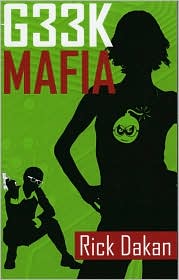
- 15: List of Paul's (former) coworkers.
- With the help of Chloe's “Crew,” Paul negotiated a stock
selling arrangement netting him $850,000 by blackmailing his former
coworkers.
- 50+: As a challenge, Paul comes up with a money-making
venture based on creating counterfeit comic books, sealing them in CRG
(Comics Rating Group) cases, and selling them on eBay. This has the
added benefit that nobody will ever know they have been ripped off,
since no collector would ever open a sealed case.
-
- 68 - 71: Tale of how Chloe came to be a con artist.
- 89: By coincidence, Paul's scheme was going to gross
$85,000.
- 93: Discussion of how to live “off the grid.”
- 94:
“Sounds like a party. We'll definitely have to pull that
one.
I'll look into it, see if there are any angles we can play to make a
few bucks while we're there.”
“You're always looking for the angles aren't you?”
“I never seem to find any angels, so angles are all that's
left.”
- 117: “No one ever got anywhere trying to impress a crazy
person.”
- 171: Paul comes up with another scheme as a means to
formally join the Crew:
“Well, I was driving around earlier today looking for
inspiration and then it literally hit me. Who are the most credulous,
illogical people out there? Who'll believe any damn fool thing, no
matter how ridiculous, as long as it's said with authority? Who
deserves to have their money separated from their bank accounts on
general principal, just for being so obnoxious?” He paused to milk the
moment. “The answer's obvious —
right-wing talk radio listeners.”
SEX
AND ROCKETS
The Occult World of Jack
Parsons (1999)
new edition (2004)
with an introduction by
Robert Anton Wilson
Paperback
feral house, Los Angeles,
California
2008-09-10 to 2008-09-16

Introduction: A Marvel Walked Among Us by Robert Anton Wilson
- viii - ix: A list of events in 1914, the year of
Parson's birth:
Police arrested the legendary labor hero Joe Hill in Utah on
January 13 for a murder he almost certainly did not commit, and the
State executed him the following year. His last words, “Don't weep for
me, boys—organize!” became a mantra to union members for decades after.
In Colorado, John D. Rockefeller's hired goons killed 21
people (including 11 children) in a clash with other labor “radicals.”
Leftists protested outside Rockefeller's New York office and got
arrested for it: a court order banned any other people with signs or
banners from parading in front of that sacrosanct shrine of the
Almighty Dollar. Novelist Upton Sinclair appeared that next day with a
blank sign, telling reporters that free speech had died. Suffragettes
marched on Washington June 28, demanding equal rights for women.
Charles Taze Russell, founder of the Jehovah's Witnesses,
announced that the apocalypse would begin on October 2—coincidentally
or synchronistically, the very day Marvel Whiteside Parsons [who would
later, as Jack Parsons, call himself the AntiChrist] emerged from his
mother's womb, or from even darker places, and began to investigate and
meddle with this planet.
- xii: Robert Anson Heinlein's STRANGER
IN
A STRANGE LAND (1961) was the first sci-fi novel
to reach the New York Times
best seller list. Many say that his good friend Jack Parsons was hugely
influential on it.
- xviii: On the duality of his personality, and his drug use:
Jack Parsons' magick and John Parsons' science have a closer
unity than most people can imagine. They both aimed at the stars.
By the way, all over northern Europe traditional art shows
the
fairy-people and sorcerers surrounded by mushrooms, usually
the “liberty cap” mushroom, now identified as psilocybin, the
same used by Native American shamans for around 4000 years. The Irish
Gaelic name for this fabulous fungus, Pokeen, means
little god (“Little fairy”
in modern Gaelic, but pook
derives ultimately from bog,
the Indo-European root for “god.”)
Crowley spoke for this tradition when he said true religion
always invokes Dionysus, Aphrodite and the Muses, which he also called
“wine, women and song.”
Nowadays we call this magick trinity Sex and Drugs and Rock
‘n’
Roll, and celebrate them at Raves that hauntingly resemble the earliest
stirrings of cosmic questing by ancestors who dressed in animal skins
and looked even more like gorillas than we do.
- xix: H.L. Mencken said that Christians have “the
haunting fear that somebody, somewhere, might be having a good time.”
[Main text]
- xxv: There is a joke in the aerospace world that “JPL”
stands for “Jack Parsons' Laboratory” or even “Jack Parsons
Lives.”
- 8: Parsons and friend Ed Forman attended a famous lecture
by graduate student William Bollay about the rocket experiments of
Austrian Eugen Sänger. The talk concluded with the possibility of
“stratospheric passenger carriers.”
- 8: JPL started as the Guggenheim Aeronautical Laboratory,
California Institute of Technology (GALCIT).
- 8: In 1926 GALCIT came under the direction of Hungarian
professor Theodore von Kármán (1881–1936). He was a descendant of Rabbi
Judah Loew ben Bezalel of Prague, who legend says created the Golem.
- 9: Parsons often recited Aleister Crowley's “Hymn to Pan.”
- 9: In 1958 von Kármán said that the three most important
people in developing rocketry in the United States were himself, Frank
Malina and Jack Parsons.
- 17: Hsue-shen Tsien joins the group. On page 198, the
author mentions THREAD
OF THE
SILKWORM (1995)
as a good source on Tsien.
- 23: Parsons and Malina wrote a 38-page manuscript outlining
a proposed novel with an anti-war message:
Near the end of the story, Belvedere [based on Parsons]
accidentally blows himself up trying to stop one of his experiments—it
should be noted that this story was written 15 years before Parsons
died the same way, an eerie prophecy. Further, the character based on
Tsien gets sent back to China under suspicion of communism and drops
out of touch with the others, an incident that later occurred. Many of
those who remain are investigated for their anti-capitalistic political
beliefs, and Malina's great fear—that their work would be used for
wartime applications—also came true. In the story it is a rich investor
who actually sells their secrets to the Nazis and Fascists.
- 29: Malina didn't want to use rockets for military
applications. Parsons was more interested in the end result.
- 26 - 28: Parsons testifies as an expert witness at a car
bombing trial.
- 30 - 31: Fritz Zwicky, who had taken graduate courses under
Einstein, believed that rockets could not fly in a vacuum.
- 37+: A short history of the Ordo Templi Orientis
(Order of the Temple of the East)
- 44: The OTO grades from 0° = 0° to 10° = 1°
- 48 - 55: Parsons and Forman are featured in the August 1940
issue of Popular
Mechanics.
- 57: Lord Bulwer-Lytton is famous for starting a novel with
the phrase, “It was a dark and story night.”
- 57 - 58: Parsons meets Jack Williamson, author of the novel
Darker Than You Think.
Williamson was surprised that Parsons took it more seriously than he
did.
- 60 & 65: Possible meeting between Parsons and Robert Heinlein.
- 65 - 66: Successful JATO (Jet-Assisted Take-Off) test of an
Ercoupe hobby plane using the fuel GALCIT-27 (meaning there were 26
failures before it).
- 70 - 71: In November 1940, a young associate of Parsons and
Forman got drunk and carjacked a young couple.
- 72: Starting with GALCIT-53, liquid asphalt is used as a
new solid rocket binder (instead of glue), with great success.
- 73: The Aerojet corporation is founded on March 19, 1942,
by von Kármán, Malina, Summerfield, Parsons, Forman, and von
Kármán's attorney Andrew Haley.
- 76: Well-established engineers were reluctant to work with
rockets, which had a bad reputation, so Aerojet had to hire unskilled
workers.
- 79 - 82: A thinly-veiled Parsons and others are featured in
the science fiction novel Rocket
to the Morgue by William A.H. White.
- 86: Parsons places ads to attract boarders who are
“bohemians, artists, musicians, atheists, anarchists, or other exotic
types” to the mansion.
- 96: GALCIT changes its name to Jet Propulsion Laboratory
(JPL).
- 98: The word “thiokol” was coined from the Greek words
for “sulpher” and “glue.”
- 100: The founders of Aerojet look for new markets in the
Post-War period. It is ironic that they had become dependent on war,
despite their earlier leanings.
- 102: Parsons takes up his “magic” with his Betty, the
younger sister of his wife Helen, after she left. He encouraged an open
relationship, which backfired when she became attracted to L. Ron Hubbard.
- 109: Parsons refers to Enochian magic developed by Dr. John
Dee and Sir Edwin Kelley. Dee (b. July 13, 1527) was Royal Astrologer
to
Elizabeth I. He an
agent of espionage who signed secret communiqués as “007.”
- 112: Development of the Enochian language:
After the hazardous dictation process was completed, the
angel provided Kelley with the English translations, which require that
Dee had to go back over the entire collection of transcripts and
substitute the English. Although each Enochian letter has its English
counterpart, it is not a letter-for-letter substitution or a code. The
letter correspondences were only provided as a pronunciation guide. An
actual dictionary was dictated, and Dee had to translate accordingly.
Enochian is thus a language unto itself, with its own grammar and
syntax. It is very succinct and has an odd relationship to English that
it does not have with other languages. One example of Enochian is the
word “Babalon,” meaning “harlot” in Enochian, as in
the “Whore of Babylon.” The Enochian system being complicated,
the entire process of dictation and translation took seven years, from
1582 to 1589.
Amazingly enough, considering the language's complexity, the
Enochian
Calls translate into English remarkably well. Regardless of the fact
that they were dictated backwards and forwards, and that the
translations were only provided later, Enochian turned out to be a
coherent language previously unknown to man.
The Calls, when translated, are quite evocative, and contain
some very beautiful passages. Although it could easily be claimed
Kelley was making the whole thing up, the Calls were nothing at all
like his usual writing style, which was quite crude even when he wrote
verse. It seems improbable for Kelley to have defrauded Dee in this
regard, as the system is just too immense and well structured.
-
113: Dee and Kelley were “told”:
- That Jesus was not God.
- That no prayer ought to be made to Jesus.
- That there is no sin.
- That man's soul doth go from one body to another childes
quickening [i.e., reincarnation].
- That as many men and women as are now, have always been.
- That the generation of mankind from Adam and Eve, is not
historical but allegorical.
- 116: The Semitic word “Bab-Il” (from which Babylon is
derived) means
“the gate of God.”
- 119+: Parsons major project was “invoking”
the “Babalon
Working.”
- 133: The numbers 7, 49, and 11 are “sacred”
- 155: Parsons, Hubbard, and Betty create a company called
“Allied Enterprises” on February 20, 1946. L. Ron Hubbard ends up
running off with the money and the girl.
- 157: Parsons catches up with Hubbard (with some
help from the U.S. Coast Guard) and successfully sues him in Dade
county, Florida.
- 159: Parsons loses his security clearance. He believes this
is due to his membership in the OTO and for circulating Liber OZ, a
statement of “the rights of man.”
- 160 - 161: According to his FBI file, he was investigated
due to his association with known Communists. Parsons is investigated
and regains his clearance.
- 166: According to the Book of Acts (8:9), Simon Magus
peddled wares under a Christian guise, leading to the term “Simony.”
- 170: Parsons performs a security breach at Hughes. He
probably was just taking old JATO paperwork to pad his résumé.
- 172: Parsons security clearance is revoked again on January
17, 1952, this time for good.
- 177: Parsons is killed by an explosion on Tuesday, June 17,
1952 at 5:08 p.m. The Los Angeles Times reports “ROCKET
SCIENTIST KILLED IN PASADENA EXPLOSION”
- 178: According to John Bluth his last words were “I wasn't
done.” According to Jane Wolfe, they were, “Who will
take care of me now?”
- 179: His mother commits suicide.
- 185: Possible connection to the “spy squad” murder
case in which Parsons testified.
- 190 - 191: Film appearances by Marjorie Elizabeth Cameron,
partner of Parsons.
- 191 - 192: The Church of Scientology spins the relationship
between L. Ron Hubbard and Parsons. They make him out to be some sort
of secret agent. An excerpt:
L. Ron Hubbard was still an officer of the U.S. Navy [and]
because he was well known as a writer and philosopher and had friends
among the physicists, he was sent in to handle the situation. He went
to live at the house and investigate the black magic rites and the
general situation and found them very bad.
- 193: Parsons was introduced to UFO-researcher and debunker
Jacques Vallee, who was the role model for the French scientists in Close Encounters of the Third
Kind.
- 198: Parallel to a short story called “End as a World” by
F.L. Wallace:
The story started with newspaper and radio accounts of the
end
of the world. Day-to-day activity stopped as people look up and wait
for the end. Suddenly a loud noise was heard, and a bright flash of
light was seen overhead. It was not what was expected, i.e., the
explosion of the planet: It was the first rocket ship. It was indeed
the end of the world, the story concluded, but the beginning of the
universe.
John Parsons, self-professed Antichrist, may not have
brought
about the end of the world, but not through his contributions to
science he played a part in brining about the beginning of the universe.
SPOOK
COUNTRY (2007)
Paperback
Berkley Books, New York
2006-08-13 to 2008-11-11
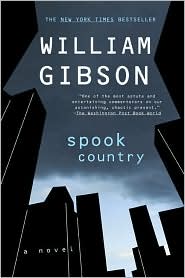
- Set in February 2006
- Hollis Henry: former member of a band called the Curfew,
along with Reg Inchmale and Heidi Hyde (p. 75).
- Tito and his cousin Alejandro are being spied upon by Brown
and Milgrim.
- 18: Volapuk: Russians approximating Cyrillic on Roman
keyboards. Essentially an artificial language, like Esperanto.
- 18: IF = Illegal Facilitator
- 36: Hollis is on assignment for Blue Ant, an obvious
crossover with PATTERN RECOGNITION.
- 65: The most interesting applications of new technology
tend to happen either in art galleries or the battlefield.
- Bobby Chombo: GPS expert who grids his floor and sleeps in
a different grid every night.
- 87: The CIA works together with pirates to inspect (and
steal cargo) from suspected WMD-smugglers.
- 104: tulpa = a projected thought form from Tibetan
mysticism. Under the right circumstances, celebrity will survive its
own death, such as Elvis sightings.
- 107: Mentions anonymous footage being posted on the net,
which is another reference to PATTERN RECOGNITION.
- 119: Milgrim contemplates:
But the other aspect of the Free Spirit that fascinated him,
and this applied to the whole text, was how these heresies would get
started, often spontaneously generating around some single medieval
equivalent of your more outspoken homeless mumbler. Organized religion,
he saw, back in the day, had been purely a signal-to-noise proposition,
at once the medium and the message, a one-channel universe. For Europe,
that channel was Christian, and broadcasting from Rome, but nothing
could be broadcast faster than a man could travel on horseback. There
was a hierarchy in place, and a highly organized methodology of
top-down signal dissemination, but the time lag enforced by tech-lack
imposed a near-disastrous ratio, the noise of heresy constantly
threatening to overwhelm the signal.
- 206: Alejandro taught Tito to practice writing a new
signature upside down.
- 350 - 351: The reason for the mission is presented.
SHADOW OF THE
GIANT (2005)
Hardcover
Tor, New York
2008-11-13 to 2008-11-27
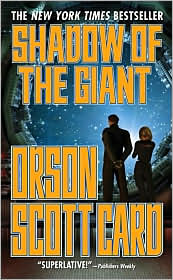
- The conclusion of the “Shadow” series revolving around Bean
and the other members of Ender's Jeesh.
- 13: The public had been told that Mazer Rackham (hero of
the Second Bugger War) had left on the first colony ship. In fact, he
and Graff (of Battle School) have been working hard behind the scenes
to prevent the world from descending into all-out war.
- Han Tzu (aka “Hot Soup”) becomes Emperor of China after
their disastrous last war.
- Alai has been made Caliph over a united Muslim League,
although he finds his power to mostly be symbolic.
- 58 - 59: Rackham suspects that Hive Queens aren't the only
aliens out there. This is why he hopes Peter Wiggin can unite the world:
“We want Earth to stop wasting its resources on war, and
spend
them on colonizing world after world, and then trading among them so
that the whole species can profit from what each one learns and
achieves and becomes. It's basic economics. And history. And evolution.
And science. Disperse. Vary. Discover. Publish. Explore.”
- 65: Virlomi creates videos to catalog Muslim atrocities
after they invaded India:
“And that is why there are no true Muslims in the world,
because they may not choose to cease to be Muslims. If a Muslim tries
to become a Hindu or a Christian or even a simple unbeliever, some
fanatical Muslim will kill him.”
Pictures were flashed on the screen of beheaded bodies.
Well-known images, but still potent as propaganda.
“Islam is a religion that has no believers,” she said. “Only
people who are compelled to call themselves Muslims and live as Muslims
under fear of death.”
- 84: Volescu, the doctor who created Bean through genetic
manipulation, wishes to create an entire race of such people. As Anton
explains:
“A different species, yes. The children of Homo sapiens.
Homo lumens,
maybe. Still capable of interbreeding, the the old style of human—they
grow to be old, but they are never big. And they are never very smart.
How can they compete? They are gone, Bean. Your people rule the world.”
-
106: The plan is for Bean and Petra to find their children who share
his condition to fly away at relativistic speed until a cure can be
found. Yet Bean does not think there will ever be a cure for Anton's
Key, and comes up with a plan of his own:
When he got on the starship with the babies that had his
same
disease, he expected to take off and head outward into the stars. He
would live long enough to teach the children how to run the starship.
They would explore. They would send reports back by ansible. They would
map habitable planets farther away than any other humans would want to
travel. In fifteen or twenty years of subjective time they would live a
thousand years or more in real time, and the data they collected would
be a treasure trove. They would be the pioneers of a hundred colonies
or more.
And then they would die, having no memory of setting foot on
a
planet, and having no children to carry on their disease for another
generation.
And it would all be bearable, for them and for Bean, because
they would know that back on Earth, their mother and their healthy
siblings were living normal lives, and marrying and having children of
their own, so that by the time their thousand-year voyage was over,
every living human being would be related to them one way or another.
That's how we'll be part of everything.
So no matter what I promised, Petra, you're not coming with
me, and neither are our healthy children. And someday you'll understand
and forgive me for breaking my word to you.
- 108: Peter's criteria for member states in the Free People
of Earth (FPE): majority, viability, contiguity, and compactness.
- 118: Bean learns that Peter has been using Ender's pension.
Bean insists that software be derived from the “Giant's Drink”
program to run his pension in perpetuity.
- 266: Rackham explains his motive to Peter:
“We want you to win so that the human race can stop spending
its vast surpluses on ways to kill each other, and can instead send all
the people that would have been killed in war out into space. And all
the money that would have been spent on weapons can be spent on colony
ships, and on trading ships, eventually. The human race has always
produced a vast surplus of human beings and wealth, and it has used up
almost all of it either on stupid monuments like the pyramids or on
brutal, bloody, pointless wars. We want you to unite the world so that
this waste can finally stop.”
- 300: Euripides wrote: Whom the gods would destroy, they
first make mad.
- Virlomi eventually starts to believe her own propaganda
that she is an instrument of the gods. She marries Alai and leads an
invasion of China.
- A woman named Randi gave birth to Bean and Petra's 9th
child in secret, thinking it he the son of Achilles. She plans to take
him to a colony world
- 341: As almost all nations have joined The Free
People of Earth (the United States is the last holdout), it has four
capitals: Bangkok, Rwanda, Rotterdam, and Blackstream (Ribeirão Preto).
MANAGING MARTIANS (1998)
with Danelle Morton
Paperback
Broadway Books, New York
2008-12-04 to 2008-12-14

- Donna Shirley was Manager of the Jet Propulsion Laboratory's Mars Exploration Program. Link to Mars Site: http://mars.jpl.nasa.gov/
- 50
- 52: She had some close calls while getting her pilot's license. On
her first solo cross country flight, she descended through an opening
in the clouds. Afterwards, her instructor chastised here. If the hole
had closed, she would have been flying blind.
- 53: While descending to pick up a friend, she just barely made it over some telephone lines. On the ascent, they went under the telephone lines.
- 58: During a stressful technical drawing competition (where the men were condescending), she spilled ink on her drawing.
- 65: Her college grades were very poor. When she got engaged, and briefly lost interest, her grades got even worse.
- 68 - 69: Her fiancé
Johnie's favorite fantasy of the future was them as senior citizens,
sitting on the front porch, and waiting for their grandchildren to
visit. She realized that this was not for her.
- 69: Most
recruiters from aerospace companies were not interested in her, except
for one from McDonell Aircraft, who invited her to his hotel room.
- 73
- 74: Her boss constantly propositioned her. She finally avoided the
harassment by saying that acting out on their feelings would jeopardize
their security clearances and their jobs.
- 95: During the 1970s
Shirley led a group developing alternative energy. Yet when Reagan was
inaugurated, he declared the Energy Crisis over, and the program ended.
- 111: CARD = Computer Aided Remote Driving
- 123:
President George H. W. Bush announced on July 20, 1989 that we were
going to the Moon, to stay, and then on to Mars. This provided some
temporary enthusiasm.
- 135: NASA's original Cold War purpose was to “flex our missiles.”
- 192:
After spending thousands of dollars testing and modifying Motorola
modems, the next batch they ordered were different. When management at
Motorola learned they were planning to fly with commercial hardware,
they sent a letter saying performance was not guaranteed and requesting
that the JPL team not use them lest the hardware fail and give Motorola
bad publicity.
- One of the major problems of the missions was
that the modem frequencies varied with temperature. Small differences
in frequency between the transmitter and receiver caused communication
failure.
- 241: Pathfinder lands on Mars on July 4, 1997
- 271: Shirley published her book Managing Creativity electronically at http://managingcreativity.com/
- 273: Pathfinder saved money by adapting the spacecraft to the operations system.
- 274: Donna's Laws:
- The customer isn't always right, he may want something that can't be done for the money.
- A really creative team will probably be as contentious as it is brilliant.
- You may have to give up credit for an idea to see it happen.
- There is never enough time and money—but you'll have to get the job done anyway.
- Everything is a big hassle; if it isn't a big hassle you probably don't understand the situation.
- Work should be done playfully as often as possible.
EIFELHEIM (2006)
Hardcover
Tor, New York
2008-12-16 to 2008-12-27

- This is a story about an alien ship crash landing on
Earth—with
a twist. The aliens landed in a small village in Germany in 1348, as
the plague was sweeping through Europe. The writing is split between
then and modern times, where Tom is investigating the historical
mystery and his girlfriend Sharon is developing a multiverse theory,
which could explain their means of interstellar travel.
- 25:
A hard man to deal with, Dietrich thought as Joachim left,
and
a harder one to know. The young monk wore his rags with greater pride
than the pope in Avignon his gilded crown. The Spirituals preached the
poverty of Jesus and His Apostles and railed against the wealth of the
clergy; but the Lord had blessed not the poor, but the poor in spirit—“Beati
pauperes spitu.” A clever distinction. As Augustine and Aquinas had
noted, mere poverty was too easily attained to merit such a prize as
Heaven.
- 32: Tom explains “forces of history” to Sharon:
“If affinity were the only force,”
Tom continued, “the entire population would be sucked into the local
maximum. But population density itself creates a second potential
because, cæteris
paribus, people prefer wide open spaces to getting someone's
elbow in their ear. So there's a countertendency for the population to
spread out evenly across the landscape in a kind of cultural heat
death. The interaction between these two forces generates the
differential equations for a reaction-diffusion process. Population
accumulates at the equilibrium sites, with settlement sizes distributed
according to Zipf's rank-size law. Each settlement generates a cultural
potential field whose strength is proportional to its wealth and
population and which diminishes with the square of the distance.
Geographically, these settlements and their hinterlands form hexagonal
patterns called Christaller grids. Ert,
Nagy kisasszony?”
- 33: When Sharon thinks she has seen something that Tom had
overlooked, “No field of knowledge is so transparently simple
as another's.”
- 47: Dietrich comments on the democracy in Max's native
Switzerland:
“I fear the hands of all those neighbors, raised together,
may impose
one day a tyranny weightier than the hand of a single lord. With a
lord, at least you know who to bring to account, but when a mob raises
its many hands, which holds the blame?”
- 105 - 106: Dietrich had considered the Krenken as morally
equivalent to people, until his Aristotelean reason got in the way.
Dietrich trembled. All beings, desiring their proper end,
move
toward it by nature. So a stone, being earth, moved naturally toward
the earth; and a man, loving the good, moved naturally toward God. But
in animals, the appetites are moved by the estimative power, which
rules despotically, while in men, they are moved by the cognitive
power, which rules politically. So, the sheep esteems the wolf as enemy
and runs without thinking; but a man may stand his ground or flee as
his reason suggests. Yet, if the Krenken were ruled by instinctus, the
rational appetite could not exist in them, since a higher appetite
necessarily moved a lower one.
Which meant that the Krenken were beasts.
- 108: The speed of light is getting lower.
- 110 - 111: The expansion of the universe analogous to
points on a balloon.
- 158: When Hans comments on a mason's evident lack of skill
in constructing spiral stairs:
“But no,” Dietrich said. “The stumble-steps are so
attackers climbing the tower ‘trip up.’ The stairs spiral
right-handwise for similar reason. Invaders cannot wield their swords;
while the defenders, fighting downward, have a full swing.”
Hans shook his head, a gesture he had
acquired from his hosts.
“Your ineptness proves always cunning.”
- 164: When Sharon admits she is researching the slowing
speed of light:
There was the warning from the tribunal. Repent of your
heterodoxy or be damned. But Sharon Nagy was on the scent of something
very peculiar, and Jackson Welles knew nothing of Évariste Galois.
Facing a duel at dawn, Galois had spent his last night scribbling the
foundations of algebraic group theory. A good night's sleep, and he
might have survived the duel; but there is a certain frame of mind that
prizes discovery over life itself. If death had not daunted
young Évariste, what terror had loss of funding over Sharon?
She was not as young as he had been, but she knew how to take a bullet.
- 200 - 201: Pastor Dietrich writes a letter in his defense
of harboring and baptizing “demons,” later published by liberals in a
book called Tolerance
Through the Ages. They had believed Dietrich was perhaps
harboring a band of Jews.
- 202: Tom is surprised to hear that the Inquisition had rules.
- 216: William of Ockham arrives. He leaves about the same
time that the plague arrives, and is never heard from again.
- 255 - 257: Description of a multiverse theory and the
possibility of instant interstellar travel through higher dimensions.
- 280 - 281: Quantized time as an explanation for redshift
gaps.
- 300: Sudden shift to first person perspective of one of
Tom's Germany friends, Anton Zaengle.
- 300: Brains are used to read between the lines. That is
what “intelligence” means: inter
legere.
EVIL
GENES
Why Rome Fell, Hitler Rose, Enron Failed, And My Sister Stole
My Mother's Boyfriend (2007)
Barbara Oakley
Hardcover
Prometheus Books, Amherst, New York
2008-11-28 to 2008-12-28
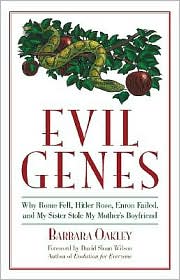
- 32, 41, etc.: Society seems to have chosen “Machiavellian”
to describe someone manipulative and duplicitous. See THE PRINCE
by Nicoló Machiavelli.
- 40: Richard Christine took the opportunity of a year off as
a fellow of the Center for Advanced Study in the Behavioral Sciences to
try to develop the psychological equivalent of Einstein's unified field
theory.
- 42: Criteria for Machiavellian personalities:
- View others as objects to be manipulated rather than as
individuals with whom to empathize.
- Lack concern with conventional morality. Lying, cheating,
and other forms of deceit are acceptable forms of behavior.
- Lack obvious psychopathology. Although perhaps not the
epitome of mental health, contact with the more objective parts of
reality would be within normal range.
- Have low ideological commitment. They are more concerned
with tactics for achieving possible ends than in an inflexible striving
for an ultimate idealistic goal.
- 49 - 50: Psychology professor John McHoskey argues that
Machiavellianism and psychopathy are one in the same.
- 65: Uses the terms microevolution
and macroevolution.
- 69 ftnt: Regarding the term evil genes:
*Okay, if you really wanted to be picky here, you could say
“problematic alleles,” or even “quantitative trait loci that
have been affiliated with specific personality disorders,” with the
caveat that environment can often play an important accompanying role
in those with a genome that has set them at risk. But it doesn't have
quite the same ring, does it? In any case, it's important to remember
that depending on the constellation of other genes in a body,
supposedly evil genes might have a neutral, or even positive effect. Or
such genes could have mixed positive and negative effects, such as
increased intelligence coupled with increased neuroticism.
- 72 - 74: Malfunctions of the SERT, or “serotonin transporter”
molecule, may lead to depression by not restraining natural fears
and anxiety.
- 76: The concept that one gene may affect many parts of the body is called pleiotropy, from the Greek pleio (“many”) and tropo (“turning
toward”). For example, activation of the APOE4 allele may help children
survive malnutrition, and can lead to sharper memory in children, but
causes predisposition to Alzheimer's disease later in life.
- 76: The opposite is polygeny, where a single trait is influenced by many genes.
- 79: The COMT gene has two versions, val and met. The val version is associated with aggressivity, while the met leads to anxiety, summarized as “warrior” versus “worrier.”
- 81:
A damped connection between the orbitofrontal cortex and the amygdala
might lead to trouble with stimulus-reinforcement learning.
- 83: Genetic traits that don't run in families are called emergenesis.
- 86
- 87: Child prodigy Norbert Weiner pointed out that in Jewish culture,
a learned rabbi was generally always able to make a good living and
support a large family, while traditionally in Christian society, the
learned man was absorbed into the Church and would not have children.
Could this have bred out some intelligence?
- 98
- 99: Williams Syndrome is characterized as “antipsychopathy,” because
those with it are extraordinarily trusting and sociable.
- 104 - 105: Mirror neurons lead to empathy.
- 105 - 106: Anatomical differences in the hippocampus seem to exist between “successful” and “unsuccessful” psychopaths. Psychopaths with impairments have difficulty learning social cues and are more likely to get caught.
- 134:
Schizophrenia and bipolar disorder are classified as Axis I disorders.
Other conditions thought to be due to psychosocial stresses are put in
Axis II. Insurance companies tend to only cover Axis I, leading to
over-diagnosis.
- 146: “Gaslighting” comes from the 1944 movie Gaslight where Charles Boyer tries to make Ingrid Bergman believe she is losing her mind.
- 149: People with borderline personality disorder consume a disproportionate amount of medical resources.
- 154: Slobodan Milosevic changed his ideology like a chameleon.
- 169:
When Milosevic revoked Kosovo's autonomy in 1989 all Albanian
professors were expelled from the University of Pristina and schools
were closed. Children ended up in illegal privately organized high
schools.
- 174 - 175: Continuing from linguist Noam Chomsky, Steven Pinker, Judith Rich Harris, John Tooby, and his wife Leda Cosmides concluded that the “module” for learning language evolved just like any other body part.
- 175:
Chinese speakers use different areas of their brain for mathematics
than English speakers. Eye-tracking studies show that they literally
see the world differently.
- 187: Emotional reasoning (“emote control”) preceded rational thinking, which may only have emerged withing the last 150,000 years.
- 189:
Political thinking, like getting a fix, doesn't let the facts get in
the way of a conclusion. In fact, the parts of the brain associated
with reasoning are not activated when“emote control” begins to occur.
- 190: Confirmation bias, cognitive dissonance, etc.
- 191: “Such
government-mandated programs as busing and the projects, often
generated by emote control related to genuinely altruistic
considerations, have wasted billions of taxpayers' dollars and led to a
worsening of the very conditions they were meant to solve.”
- 221: Borderlines have a “lack of object constancy.” This is the ability to soothe ourselves by remembering the love others have for us.
- 242: Mao's “Little Red Book” was said to cure the blind and deaf, heal paralytic limbs, and even once raise a man from the dead.
- 262:
A genetic shift has been found in American Indians which allows more
effective use of mitochondria, adapting to cold. Some adaptations in
humans seem to be lost in modern lifestyles: olfactory abilities,
detoxifying natural plant poisons.
- 264: Changes in behavior and
environment result in Baldwinian evolution, named after American
psychologist Mark Baldwin. For example, the spread of mosquitoes and
subsequent malaria from slash-and-burn farming lead to sickle-cell
anemia mutations to be partially beneficial.
- 267: Virtually
everyone in the Asian steppes is carrying DNA of Genghis Khan's family,
through Genghis and his brothers. The progenitor of China's Qing
dynasty, Gioncangga, is the probable ancestor of 1.6 men living today.
- 268: Niall of the Nine Hostages is thought to be a direct paternal ancestor of 1 in 5 men from northwest Ireland.
- 271
-: The slave girl Roxalena became the wife of Sultan Suleyman the
Magnificent, and a manipulative founder of a dynasty in her own right.
- 277 - 278: Borderline personalities tend to embed themselves in hereditary aristocracies by being drawn to power.
- 303 -304 ftnt: Philip Zimbardo recently published The Lucifer Effect about his famous Stanford Prison experiment.
- 311 - 312:
Hitler had an excellent memory, which he used to arrogantly claim he
knew better than military experts. Mussolini, Castro, Stalin, Mao,
and Milosevic were similarly known for their remarkably good memories.
- 327: APOE4 increases the risk of Alzheimer's but reduces the risk of getting polio.
 MNRay.net
MNRay.net
 MNRay.net
MNRay.net
